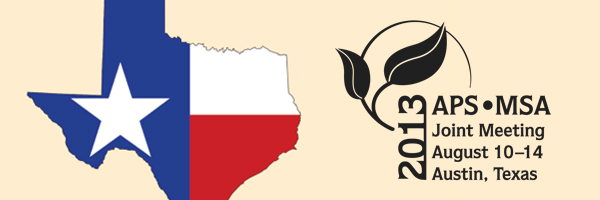APS Homepage
Back

Poster Session: Biochemistry and Cell Biology of Pathogenesis
© 2013 by The American
Phytopathological Society. All rights reserved.
633-P
Specific discrimination of Fusarium proliferatum using inter-simple sequence repeats (ISSRs) and simple sequence repeats (SSRs).
I. MONCRIEF (1), C. Garzon (1), S. Marek (1), J. Stack (2), A. Gamliel (3), Y. Issac (4), H. Dehne (5), J. Fletcher (1)
(1) Oklahoma State University, Stillwater, OK, U.S.A.; (2) Kansas State University, Manhattan, KS, U.S.A.; (3) Agricultural Research Organization (ARO) Volcani Center, Bet Dagan, Israel; (4) Agricultural Research Organizational (ARO) Volcani Center, Bet Dagen, Israel; (5) INRES, Institute of Crop Science and Resource Conservation, Bonn, Germany
Fusarium proliferatum (Matsushima) Nirenberg has a wide host range including both wild and cultivated plants. In the late 2000s, F. proliferatum was isolated from diseased white onions in Yotvata, Israel. Symptoms, which include salmon-colored blotches on the outer scales, are visible in the field on mature onion bulbs of white cultivars. But, the fungus can be isolated from internal tissues of yellow and red onion cultivars, as well as from onion sets and other nonsymptomatic plant species. Little is known about the diversity and distribution of F. proliferatum strains involved. We are testing the use of ISSRs and SSRs (microsatellite or repetitive genomic region based methods), to characterize populations and discriminate isolates. Seven F. proliferatum isolates from Israel, Germany, and North America, from cucumber, onion, garlic, maize, asparagus, and salt cedar, were screened with five ISSR primers published in the literature. Electrophoretic fingerprints of the PCR products were compared, and ISSR primers 808 (AGA)n, 827 (ACA)n, and 817 (CAC)n were the most informative, demonstrating high variability among seven isolates. Primer 817 amplified a band of around 1,300 bp, but with minor size variations, from six isolates. ISSR results were used to develop specific SSRs to discriminate among F. proliferatum populations from multiple countries and hosts. This approach will be useful for diagnostic, epidemiological and forensic applications.